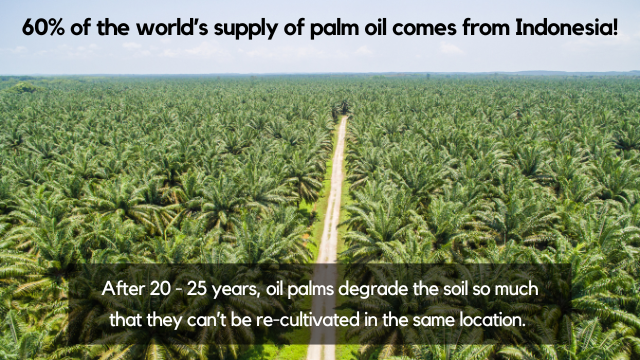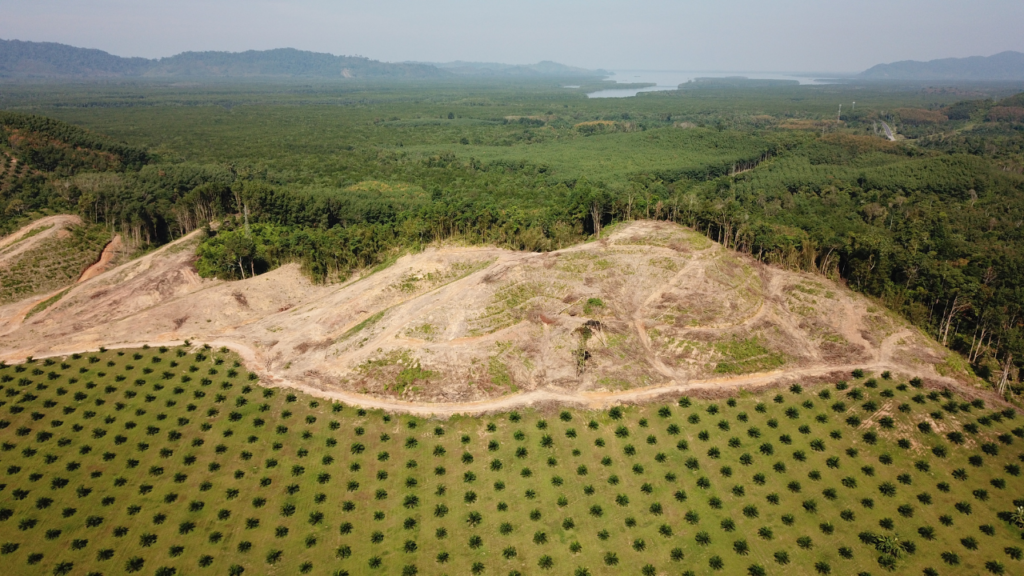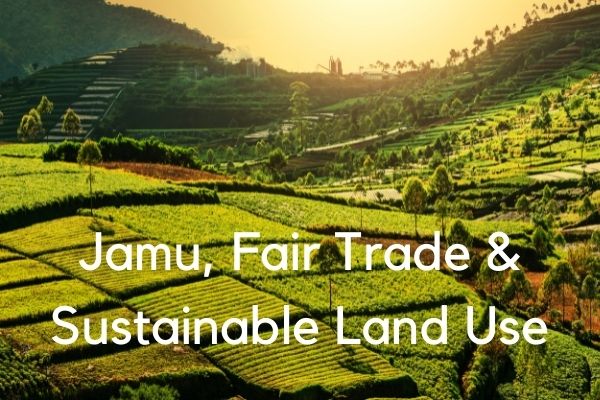Did you know?
Large areas of Sumatra’s historically perfect soil are under threat by manipulative multi-national corporations. Their land clearing for non-sustainable industries is directly responsible for the destruction of Sumatra’s fragile ecosystem and critically endangered wildlife populations.

So, more land is cleared to grow new oil palms
(or poison palms, as they should be known…)
Palm Oil Deforestation
– Palm oil plantations fragment the forest, cutting off migratory corridors for Sumatran elephants.
– Deliberately lit fires on peat soil can burn for months underground, releasing large amounts of CO2.
– Non-sustainable logging reduces the habitat for some of the most critically endangered animals in the world.
– Deforestation disrupts the natural drainage of soil – making floods more request, rapid and severe.

Palm oil deforestation fires burning on peat soils have unfortunately become a seasonal phenomenon in Sumatra. At the start of October every year local workers employed by corporations set fire to areas of natural forest. This method is called “slash and burn” it’s a cheap and easy way to clear large areas of land, commonly used in the palm oil industry. Shamefully these fires are lit with no intention or desire to extinguish them. They are allowed to burn largely uncontrolled until seasonal rains extinguish them, ironically relying on Mother Nature to do the work. These companies have no regard that their fires are destroying fragile and ancient peat soils that have taken centuries to form.
Peat fires are a catastrophe for the environment because they release enormous amounts of CO₂ into the atmosphere. They smolder deep underground and are difficult to control, taking large amounts of water and considerable time to fully extinguish. The smoke and carbon released has severe consequences for not only Sumatra but for Asia and the rest of the world.
Throughout Sumatra in October the number of respiratory related deaths triple as the blue sky is replaced with a grey haze. When the trade winds blow SW the smoke severely effects Kuala Lumpur & Singapore. Who have recently introduced new laws enabling them to sue corporations in foreign countries for oxygen pollution. This is good news for the environment because the Indonesian courts seem unable or are persuaded not lay charges on the corporations responsible. In one case the judge was roughly quoted, as saying
“if the forest burns it will grow back again.”

In 2015 the fires reached a tipping point. The head of the Global Carbon Project at the CSIRO, Pep Canadell, said
“the concentration of carbon dioxide in the atmosphere may have exceeded 400 parts per million for the first time in 2 million years, because of the 1 billion tons of carbon released by the Indonesian fires in a two-month period.”
It’s estimated over 2 million hectares of natural forest where burnt in 2015. Rendering Sumatra’s rainforests, which are thought to be the perfect climate for as many as 15,000 different species of plant, wasteland. The El Niño weather pattern contributed to the devastating and irreparable effects of 2015 fires. It’s feared that one-third of the world’s orangutans could have been murdered by palm oil companies starting these fires.




